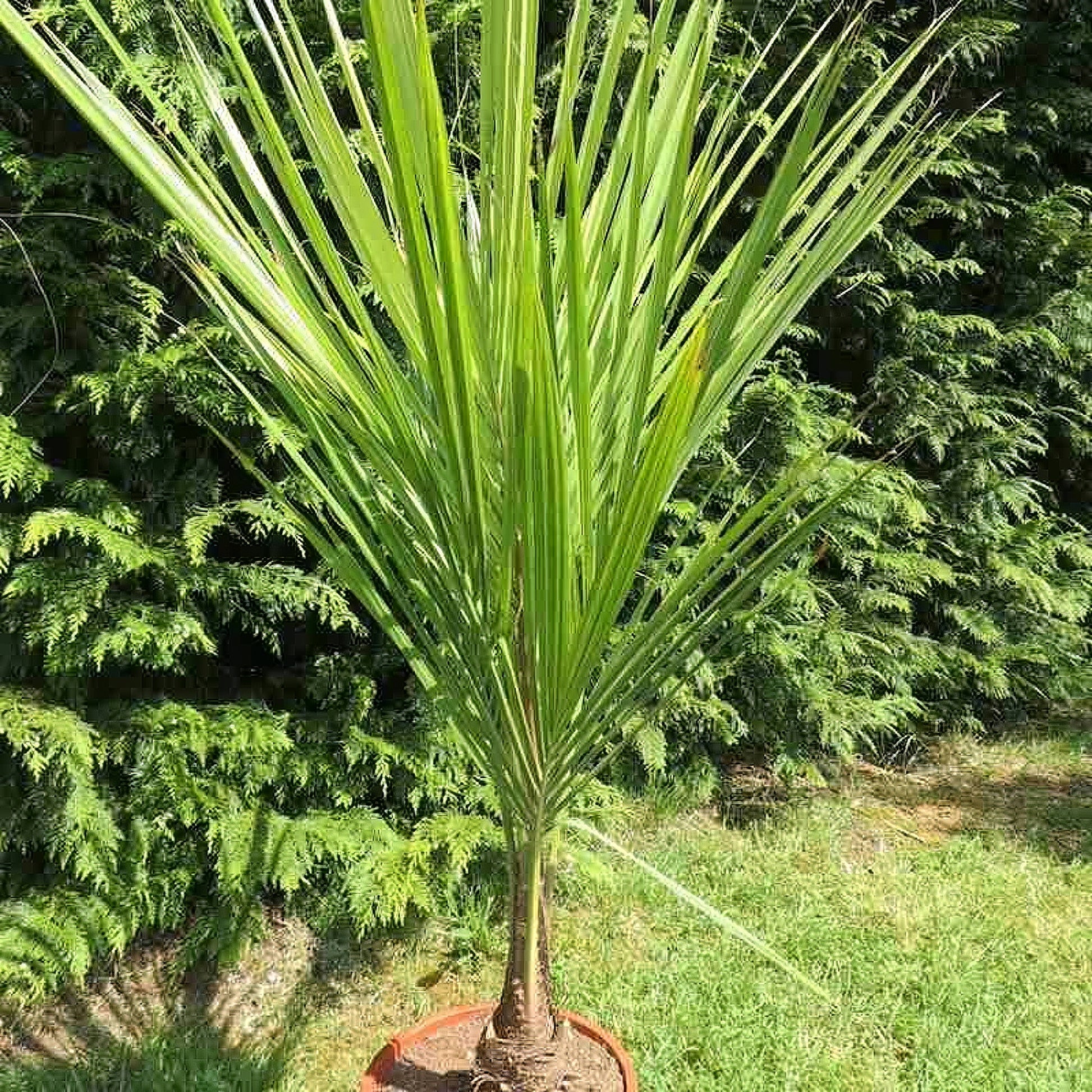Beccariophoenix alfredii, commonly known as the High Plateau Coconut Palm or Madagascar High Plateau Palm, is a striking and rare palm species native to the high plateau regions of Madagascar. This palm is known for its robust, solitary trunk and large, arching fronds that resemble those of a coconut palm, which is why it is often referred to as a "coconut-like" palm.
The trunk is smooth and ringed with leaf scars, and the crown is composed of long, pinnate (feather-like) leaves that are a rich, deep green. Beccariophoenix alfredii is a medium to large palm that can reach heights of up to 12-15 meters. It is prized for its ornamental value and is a popular choice for tropical and subtropical gardens, especially in areas where a true coconut palm (Cocos nucifera) might not thrive due to cooler temperatures. This palm is relatively cold-tolerant, making it suitable for cultivation in a wider range of climates than most tropical palms.
🌴 Tropical Elegance with Cold Tolerance: Beccariophoenix alfredii adds a touch of tropical sophistication to landscapes where traditional coconut palms cannot survive. VIRIAR.COM provides fresh, viable seeds of this exceptional rare species for collectors and gardeners seeking authentic Madagascar palms with superior cold tolerance and ornamental beauty.






